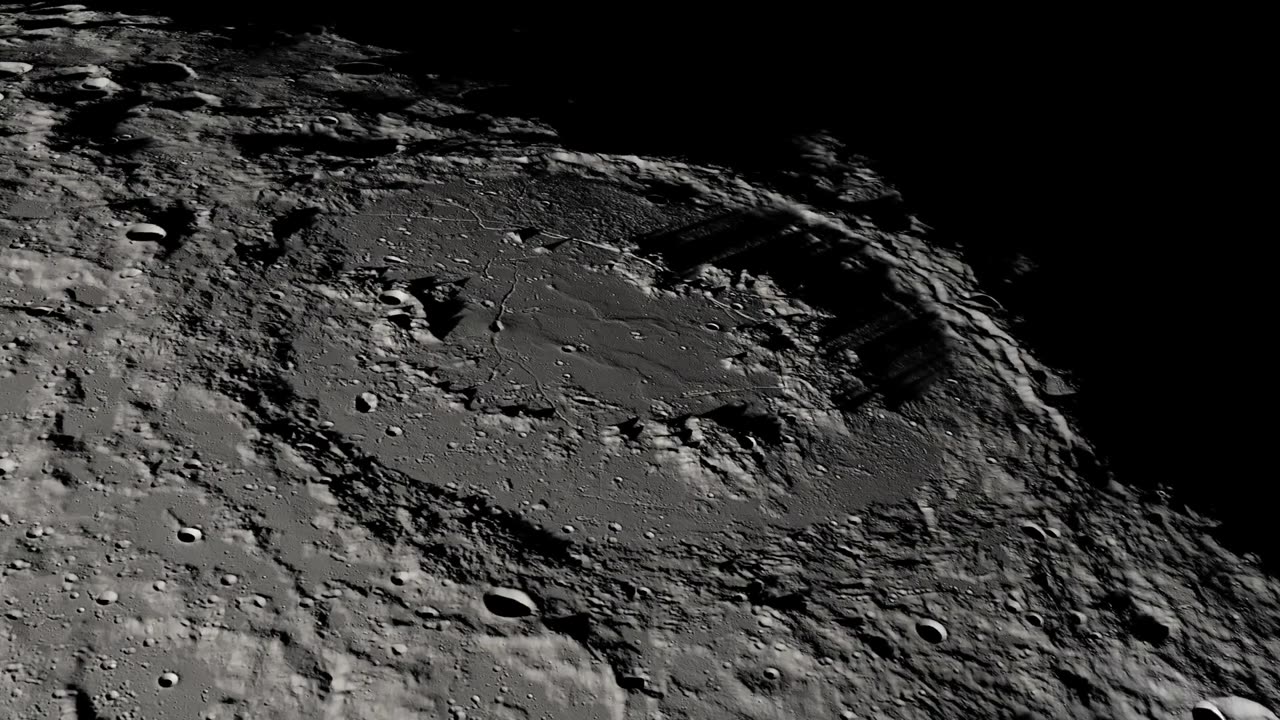Premium Only Content

NASA's : Moon Images from NASA's Lunar Reconnaissance Orbiter
The Lunar Reconnaissance Orbiter (LRO) is a NASA spacecraft that was launched on June 18, 2009, with the primary mission of studying the Moon. LRO is equipped with a suite of scientific instruments designed to capture detailed images and data about the lunar surface. Here is a description of some of the key features and capabilities related to the images captured by LRO:
High-Resolution Imaging:
One of the primary objectives of LRO is to capture high-resolution images of the Moon's surface. It is equipped with the Lunar Reconnaissance Orbiter Camera (LROC), which consists of three different camera systems: the Wide Angle Camera (WAC) and two Narrow Angle Cameras (NACs). These cameras work together to capture images of the Moon with exceptional detail.
Mapping the Moon:
LRO's imaging capabilities are used to create detailed topographic maps of the lunar surface. By taking images from various angles and lighting conditions, it can create 3D models of the terrain, helping scientists understand the Moon's geology and landforms better.
Monitoring Changes:
LRO has been orbiting the Moon for an extended period, allowing it to capture images of the same locations at different times. This enables scientists to monitor changes on the lunar surface, such as impacts from meteoroids or changes in the Moon's lighting conditions.
Identifying Landing Sites:
LRO has played a crucial role in identifying potential landing sites for future lunar missions, including crewed missions. Its detailed images help mission planners select safe and scientifically interesting locations for exploration.
Capturing Apollo Landing Sites:
LRO has captured remarkable images of the Apollo landing sites, including the lunar modules and equipment left behind by the astronauts. These images provide historical context and serve as a testament to human lunar exploration.
Lighting Variations:
LRO's ability to capture images at various lighting angles has been instrumental in revealing details in shadowed regions, such as the interiors of craters and the presence of water ice.
Public Access:
Many of the images captured by LRO are made available to the public through NASA's Planetary Data System (PDS) and the LROC website. These images are used by scientists, educators, and space enthusiasts worldwide.
Overall, the Lunar Reconnaissance Orbiter has significantly expanded our understanding of the Moon's geology, topography, and surface features through its high-resolution imaging capabilities. It continues to play a vital role in lunar exploration and research.
-
 2:05:40
2:05:40
Inverted World Live
7 hours agoThe Simulation is Burning & Missile Hits UFO in China | Ep. 110
138K17 -
 2:00:48
2:00:48
The Charlie Kirk Show
6 hours agoTHOUGHTCRIME Ep. 97 — The Thoughtcrime WILL Continue
120K86 -
 35:08
35:08
Colion Noir
11 hours agoA Bear, an AR-15, and a Home Invasion
30.3K7 -
 3:05:55
3:05:55
TimcastIRL
7 hours agoJimmy Kimmel Refuses To Apologize Over Charlie Kirk Comments, Blames Gun Violence | Timcast IRL
186K162 -
 2:44:24
2:44:24
Laura Loomer
9 hours agoEP144: Trump Cracks Down On Radical Left Terror Cells
47.7K22 -
 4:47:56
4:47:56
Drew Hernandez
12 hours agoLEFTISTS UNITE TO DEFEND KIMMEL & ANTIFA TO BE DESIGNATED TERRORISTS BY TRUMP
44.3K17 -
 1:12:32
1:12:32
The Charlie Kirk Show
7 hours agoTPUSA AT CSU CANDLELIGHT VIGIL
94.2K60 -
 6:53:45
6:53:45
Akademiks
10 hours agoCardi B is Pregnant! WERE IS WHAM????? Charlie Kirk fallout. Bro did D4VID MURK A 16 YR OLD GIRL?
74.9K7 -
 2:26:15
2:26:15
Barry Cunningham
8 hours agoPRESIDENT TRUMP HAS 2 INTERVIEWS | AND MORE PROOF THE GAME HAS CHANGED!
141K92 -
 1:20:27
1:20:27
Glenn Greenwald
9 hours agoLee Fang Answers Your Questions on Charlie Kirk Assassination Fallout; Hate Speech Crackdowns, and More; Plus: "Why Superhuman AI Would Kill Us All" With Author Nate Soares | SYSTEM UPDATE #518
123K34